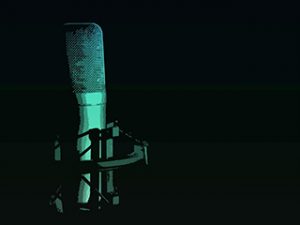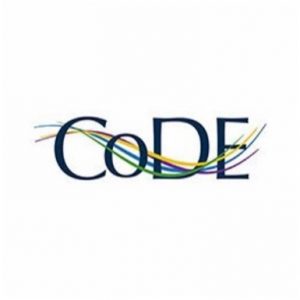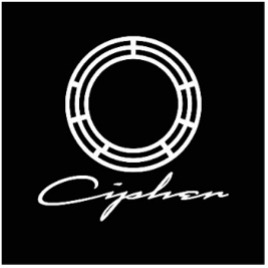 Censoring live rap music
Censoring live rap music
By Dirty Cipher
As a graphic designer for the music industry, as well as video editor, writer, content creator and manager, I got involved with the Prosecuting Rap project via Eithne Quinn and Joy White. When I learned that the project was about the way the authorities are targeting rap culture, I decided I wanted to get involved and offered to help with the artwork.
I’ve always had a love of rap and Hip-hop. I started out in the music scene as a music reviewer for a Grime website, and in doing this I discovered loads of UK-based artists, producers and
DJs on social media. Some time after I was approached by someone who liked my logo, and realised I could combine my love of music with my love of artwork, and taught myself graphic design. As I got better, I was offered more work and have been doing it for the past few years.
After working with various artists, producers, and promoters, I learned in depth about the controversial Form 696, which had been put in place to stifle artists and events soon after Grime’s inception, and how it still had echoes today. I became increasingly frustrated about the way that the state, helped by music venues, was limiting live black rap music opportunities.
With regards to U.K. Rap and Grime, this kind of music came under intense scrutiny in the U.K. sometime after the inception of Grime, when the state created the deeply contested ‘Form 696’ in 2005. The form was purportedly used as a ‘risk assessment’ tool, by the Metropolitan Police, to uncover whether an event was likely to be attended by anyone who may potentially engage in violence.
A main reason for the controversy surrounding the form was its extremely targeted questions, such as requesting the real names, stage names, phone numbers and private addresses of all promoters, artists and DJs, along with a description of the genre. In its first 3 years of use, it also required details of the ethnic groups likely to attend. The overarching implication was that particular ethnic groups would be more likely to engage in gang/youth violence. However, data on London from an influential Amnesty International report found that most youth violence is not perpetrated by minority ethnic young people. Nonetheless, the vast majority of those identified by the police as responsible for ‘gang flagged violence’ are Black. This evidences the kind of vast disparity between reality and reaction that gives validation to the censorship and stigmatisation of rap via Form 696.
The racism of the 696 Form was highlighted and contested by notable players from the music industry. Supported by activists and musicians, Feargal Sharkey, then Head of the musicians’ labour rights organisation U.K. Music, complained to the Equality and Human Rights Commission about the targeting of musical styles favoured by black and Asian teenagers. Mike Howlett, Chairman of the Music Producers Guild (UK), wrote to the General Secretary of the Musicians Union, stating ‘we feel this is a gross infringement of civil liberties and a form of racial discrimination.’ The battle ended in 2008 with the dropping of the state requirement to name ethnic groups attending events. However, the request for names and addresses remained, meaning that the form’s use as a discriminatory tool continued to prevent certain events from happening. The form was scrapped in its entirety in London, in 2017, following a review initiated by Sadiq Khan, the Mayor of London.
Anecdotal evidence from promoters and artists suggests that, for a long period, it was next to impossible to arrange an event. They lost both money and momentum in their careers because of it. I have learned that certain names on the line-up would mean the event was a ‘no-go’, and that many musicians felt held back from reaching greater heights, despite a large number of events going ahead without incident.
It is broadly believed that the censoring of music in this way was a deliberate and racist attempt at keeping certain demographics from success, by hampering legitimate efforts to afford a better lifestyle, without any solid evidence. Even now, events get cancelled if you mention the wrong genre — albeit these days largely by the clubs themselves. This is believed to be caused by the orthodox narrative – the culture of fear surrounding this kind of music – having set in in public consciousness, even if the artists or promoters have an exemplary track record for previous events.
It is a sad truth that today, Drill events are receiving the same treatment. In 2019, a concert for OFB’s Bandokay and Double LZ at the 02 Academy in Islington was cancelled at the last moment and ‘a Section 60 order – a controversial measure enabling officers to stop and search without need for suspicion – was authorised across parts of Camden and Islington until Thursday morning.’ The event had been publicised on the venue’s website as containing ‘London’s fastest-rising drill artists’, and was purported to be ‘career-defining.’ The reason for such actions was touted as being that the police had received information that ‘a large number of gang members would be attending the event.’ However, the result of the Section 60 was that ‘No arrests were made and no one was injured.’
It is clear that not much has changed with regard to the censorship of live performance in certain genres of U.K. music. It is crucial that this does not lead to the unaccountable closing down of concerts and clubs that showcase some of the most vital forms of culture that the UK has produced, whilst systematically hampering and stigmatising artists along the way. More must be done to provide a level playing field, free of racist and class-based stigma, within the music scene.
March 2022
About the author
Dirty Cipher is a graphic designer, content creator and manager in the music industry, who has created all the original artwork on the Prosecuting Rap website.




